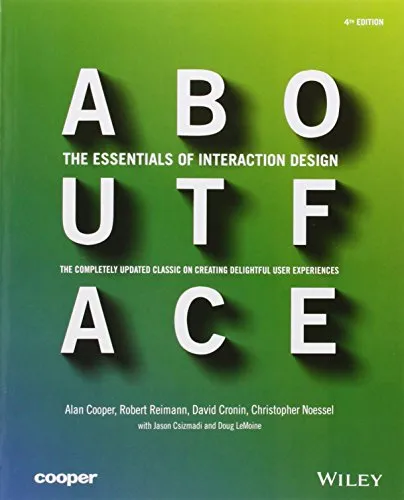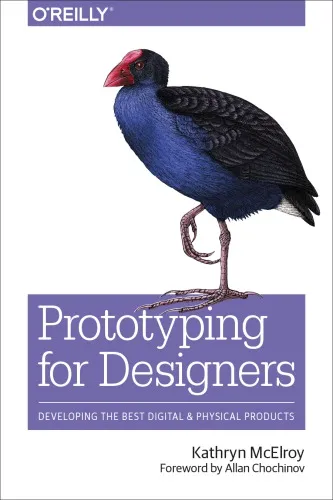Evaluating Children's Interactive Products: Principles and Practices for Interaction Designers (Interactive Technologies)
4.5
Reviews from our users

You Can Ask your questions from this book's AI after Login
Each download or ask from book AI costs 2 points. To earn more free points, please visit the Points Guide Page and complete some valuable actions.Related Refrences:
Introduction
"Evaluating Children's Interactive Products: Principles and Practices for Interaction Designers" is a fundamental resource for designers, researchers, and anyone involved in creating digital products tailored to children's needs and experiences. As interactive technologies increasingly shape modern childhood, this book emerges as a significant guide to understanding how children engage with technology, their developmental needs, and the methodologies required to build and assess products that truly resonate with their abilities and aspirations.
Detailed Summary of the Book
This book offers a comprehensive approach to evaluating interactive technologies designed for children, with a focus on aligning design practices with child-centric principles. Combining theory and practice, it introduces readers to the unique aspects of younger users, discussing their developmental stages, cultural influence, and cognitive capabilities. The book is structured to guide readers through best practices for designing, prototyping, and evaluating children's interactive products while keeping inclusivity and usability at the forefront.
The authors delve into key design considerations, including usability testing, participatory design, ethical concerns, and methods for eliciting valuable feedback from kids. Unlike adult-centric evaluation tools, this book emphasizes methodologies and frameworks tailored specifically to children, recognizing their unique ways of expressing opinions, interacting with technology, and understanding the world. The chapters provide in-depth discussion on themes such as designing for different age groups, involving caregivers and educators in the evaluation process, and leveraging creative methods like storytelling and games for deeper insights.
Through real-world case studies and evidence-backed research, the authors demonstrate how designers can create engaging, safe, and beneficial experiences for children. Readers will find actionable insights on optimizing playfulness, balancing educational and entertainment goals, and addressing accessibility for children with diverse needs.
Key Takeaways
- Understanding children’s interaction with technology: Gain insights into how children perceive and interact with digital products.
- Child-centered evaluation techniques: Learn methods such as participatory design and usability testing adapted specifically for children.
- Balancing fun and education: Discover strategies to create engaging and educational experiences for different age groups.
- Ethical design considerations: Understand the importance of creating safe, inclusive, and age-appropriate technology.
- Practical frameworks: Explore actionable guidelines and real-world case studies for designing interactive products meant for children.
Famous Quotes from the Book
Several compelling quotes from the book capture its essence and purpose:
"Designing for children is not solely about creating something fun; it is about understanding their world, their imagination, and their unique ways of engaging with technology."
"A child’s feedback, expressed through a smile, imagination, or even frustration, is as important as any usability score."
"The future of technology depends on how we design and evaluate tools for the youngest users—children teach us how to think differently."
Why This Book Matters
Interaction design for children is a rapidly growing area of research, driven by the expansion of digital tools in education, entertainment, and social engagement. This book is not only groundbreaking in its detailed exploration of methodologies and tools but a cornerstone resource for shaping the future of children's interactions with technology. It bridges the gap between academic theory and real-world applications, equipping designers with the skills to build meaningful digital experiences that positively impact children’s lives.
Moreover, it matters because it sets a benchmark for how children's needs and rights should be prioritized in technology design. The principles shared in the book resonate deeply with caregivers, educators, product designers, and policymakers striving to enhance technological inclusivity, safety, and entertainment quality for children. By focusing on both creativity and ethical responsibility, the book presents a roadmap for not merely making children "users" of technology but empowering them to become creators and active participants in their digital experiences.
Free Direct Download
You Can Download this book after Login
Accessing books through legal platforms and public libraries not only supports the rights of authors and publishers but also contributes to the sustainability of reading culture. Before downloading, please take a moment to consider these options.
Find this book on other platforms:
WorldCat helps you find books in libraries worldwide.
See ratings, reviews, and discussions on Goodreads.
Find and buy rare or used books on AbeBooks.
1176
بازدید4.5
امتیاز0
نظر98%
رضایتReviews:
4.5
Based on 0 users review
Questions & Answers
Ask questions about this book or help others by answering
No questions yet. Be the first to ask!













